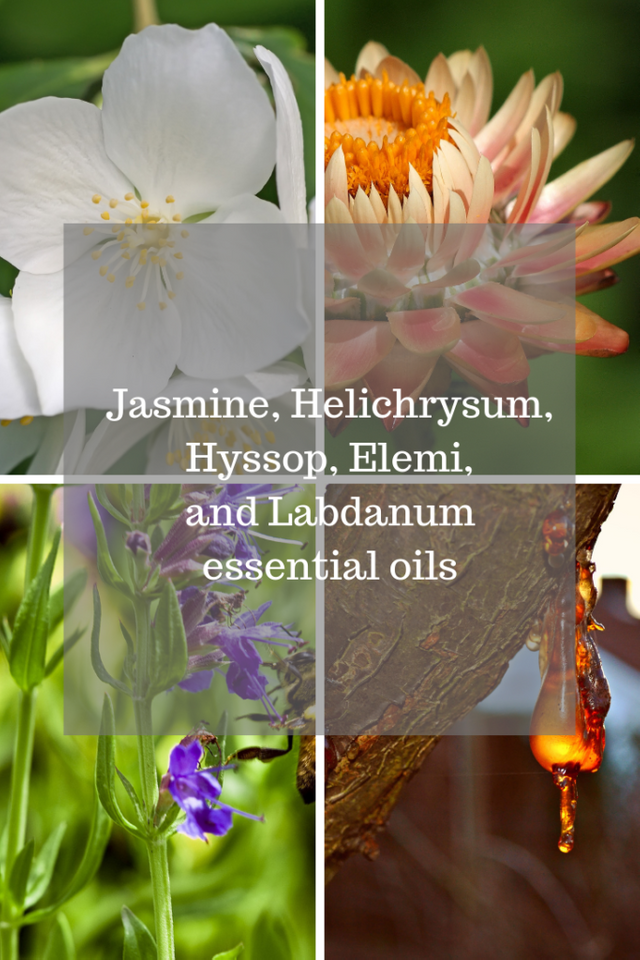

Jasmine is far more than just a Disney princess. This family of vines and shrubs prefer warm growing environments and are often added to gardens because of the way they perfume the air when in bloom. Jasmines may be evergreen or deciduous with flowers that are typically white or yellow which will turn into black berries. Jasmine has unfortunately become invasive in a few places it has been introduced. Australia, Florida, and Hawaii all have it listed as an invasive weed. The flowers are used to produce jasmine tea which uses either white or green tea as a base. The flowers are placed on top of the spread out tea leaves in special machines, as the flowers dry the tea absorbs the aroma. The best quality teas may do this up to seven times with the tea leaves being re-fired in between to prevent spoilage. In aromatherapy jasmine essential oil is useful for depression, scars, and insomnia.
Uses:
Diffused;
Depression, nervousness, coughs, relaxation, easing tension, encouraging labour progression.
Topically;
Muscle pain, coughs, reducing tension, stress, nervousness, stretch marks, scars.
Cautions:
Should be avoided during pregnancy.
Do not diffuse inside a vehicle, relaxing effect can be potent which can impair the driver.
First aid:
If skin irritation has occurred apply cornstarch or similar to absorb excess.
If gotten in the eye rinse with clear water for 15 min, if irritation persists for more than 30 min seek professional help.
If a pregnant woman has been exposed monitor closely for signs of labour or miscarriage.

The flower in the picture is technically the wrong species for the essential oil, I just want to clear that up to prevent confusion. The correct species is called H. italicum, also known as the curry plant due to the strong scent of the foliage, but it is unrelated to the leaves used in making curry. The plant has grey-green foliage with yellow flowers that retain their colour after cutting. It prefers rocky ground and may reach heights over 24 inches tall, it is native to the Mediterranean. As previously mentioned the plant has no relation to actual curry, it has however been used as a spice for its bitter, resinous flavour for meats much like sage. The flowers are put into a steam distillation process to produce the essential oil for perfume, and its medicinal properties are well studied in Europe. Both the raw material and the essential oil can be used medicinally. In aromatherapy helichrysum is useful for lowering fever, reducing inflammation, and coughs.
Uses:
Diffused;
Colds, flu, bronchitis, coughs, asthma.
Topically;
Rheumatism, arthritis, scars, acne, dermatitis, stretch marks, boils, abscesses.
Cautions:
Not for use on children under 12 years.
First aid:
If skin irritation has occurred apply cornstarch or similar to absorb excess.
If gotten in the eye rinse with clear water for 15 min, if irritation persists for more than 30 min seek professional help.

Native to the area around the Caspian sea, the Middle East, and southern Europe, hyssop has been long recognised for its medicinal properties, this is reflected by the officinalis in the latin name. Hyssop has woody stems and may grow between 12-24 inches tall, it blooms during the summer with fragrant white, blue, or pink flowers. Hyssop is mentioned in the bible for several different uses, however bible scholars believe a different plant was called hyssop at the time, we would know it under the name Syrian oregano. Ancient Egyptian priests used hyssop to purify themselves for religious ceremonies. Harvesting hyssop is done once or twice a year depending on the weather and growing season. Once harvested the material will be laid out in a cool and well ventilated space out is the sun. It will be turned a few times during the week to ensure even drying. Afterwards the leaves and flowers will be stripped from the stems and then chopped up and stored for up to 18 months. In aromatherapy hyssop essential oil is useful for regulating menstruation, encouraging urination, and clearing the lungs.
Uses:
Diffused;
Anxiety, mental fatigue, colds, coughs, bronchitis, asthma, lung infections.
Topically;
Menstrual problems, colic, flatulence, indigestion, scars, bruises.
Cautions:
Should be avoided during pregnancy.
Must be avoided by epileptics.
First aid:
If skin irritation has occurred apply cornstarch or similar to absorb excess.
If gotten in the eye rinse with clear water for 15 min, if irritation persists for more than 30 min seek professional help.
If a pregnant woman has been exposed monitor closely for signs of labour or miscarriage.

Elemi resin is harvested from a tree of the same name which is native to the Philippines. Historically the name elemi has actually been applied to resins of other trees from different parts of the world. Pliny (classical Greece) used an elemi that was said to be from a resin extracted from the Arabian olive tree, later, during the 17th and 18th centuries it would refer to the resin from a Brazilian tree then called Icica. The current elemi prefers rain forest habitat at low to medium elevations. At maturity trees may be up to 30 meters tall. They also produce edible seeds which may be consumed cooked or raw and are said to have a sweet taste to them. A cooking oil is also made from the seeds and the pulp of the fruit is also eaten. The timber is not very hard but strong enough for lighter building needs. Locals may use the bark to make a medicinal post partum bath for a mother. In aromatherapy elemi essential oil is useful for pain relief, opening the lungs, and infections.
Uses:
Diffused;
Bronchitis, dry cough, excess mucus, nervous exhaustion, stress
Topically;
Heavy perspiration, cuts, skin infections
Cautions:
Can be irritating to the skin of some people.
First aid:
If skin irritation has occurred apply cornstarch or similar to absorb excess.
If gotten in the eye rinse with clear water for 15 min, if irritation persists for more than 30 min seek professional help.

The rockrose family is not very large but they are tough little shrubs, doing well in poor quality soil. They are generally found in the temperate regions of North America, Europe, a few in south America, and the Mediterranean. When in bloom they will be completely covered in flowers which can be white, pink, or yellow with 3 to 5 petals depending on the exact species. Part of the toughness can be attributed to the species ability to have mycorrhyizal relationships. Mycorrhyizal means any plant that can form a symbiotic relationship in it's root system with a fungus, the fungus helps feed the plant nutrients while the plant gives the fungus what it gets from sunshine and air. There are more complicated associations but for now that explanation will do. They have also adapted to have hard coatings on the seeds which require fire to get them to germinate. In aromatherapy labbdanum essential oil is useful for irregular menstruation, anxiety, and clearing the lungs.
Uses:
Diffused;
Shock, numbness, deep trauma
Topically;
Lymph drainage, digestion, cystitis, menstrual cramps, psoriasis, eczema, diabetic wounds
Cautions:
Pregnant women should avoid due to emmenagogue properties.
First aid:
If skin irritation has occurred apply cornstarch or similar to absorb excess.
If gotten in the eye rinse with clear water for 15 min, if irritation persists for more than 30 min seek professional help.
If a pregnant woman has been exposed monitor closely for signs of labour or miscarriage.
First image is compiled from pixabay and then edited in canva by me. Following images were created by me in canva
Congratulations @porcheberry! You have completed the following achievement on the Steem blockchain and have been rewarded with new badge(s) :
You can view your badges on your Steem Board and compare to others on the Steem Ranking
If you no longer want to receive notifications, reply to this comment with the word
STOPTo support your work, I also upvoted your post!
Do not miss the last post from @steemitboard:
Downvoting a post can decrease pending rewards and make it less visible. Common reasons:
Submit
You’ve been visited by @porters on behalf of Natural Medicine!
There is a whole lot of information here - thanks for sharing!
Two of the plants I haven't hear of before. the labdanum and the Elemi. I never knew jasmine coud be invasive - it is such a beautiful plant and I love the teas! The hyssop grow wild by our place and the bees love it as do I. I like to grow anise hyssop for my teas.
Consider supporting Natural Medicine through continued use of the #naturalmedicine tag, or delegating any amount through clicking below. We're all for empowerment through natural wisdoms, and love to support those on their healing journey. Come join us on Discord if you're not already there! We'd love to have you.
Downvoting a post can decrease pending rewards and make it less visible. Common reasons:
Submit
I'm glad you liked it. There will be lots more like this one to cover all 136 commonly available essential oils. Not all at once though because that would be boring
Downvoting a post can decrease pending rewards and make it less visible. Common reasons:
Submit